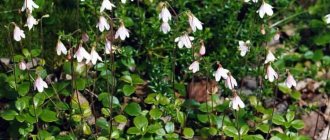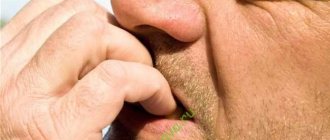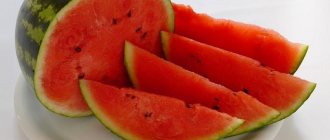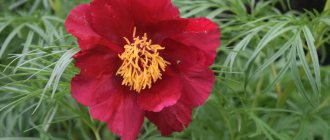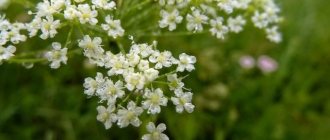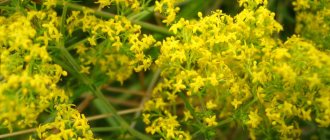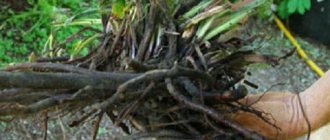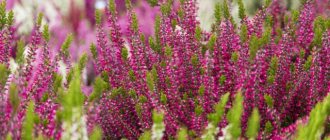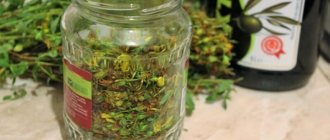What kind of plant is this, what does duckweed look like and where does it grow?
Duckweed is an aquatic plant that lives in stagnant bodies of water. It is often used as feed for ducks. For this reason, it was nicknamed duck grass. Duckweed belongs to the family Araceae and the genus Flowering monocots. It lives in places with temperate and tropical climates, but only in fresh water bodies. You can find the plant almost everywhere except the Far North.
A description of duckweed will help you imagine what it looks like. The root system of the plant is poorly developed. It functions as an anchor that holds the plates on the water surface. The flattened long stem of duck grass is called a leaf. The diameter of the leaf-shaped body is 0.5-1 cm. The flowering process occurs extremely rarely. Flowers do not have petals or sepals.
The duckweed plant, the photo of which is shown below, reproduces by budding. The flowering process occurs from May to September. The fruiting period of the plant is July-August. The fruits reach 1 mm in width and have wing-shaped edges. Subsequently, seeds appear from them.
Due to its ability to absorb heavy metals, in some countries the plant is used to purify industrial waters.
Attention! The nutritional value of duck grass leaves is not inferior to cereals.
Types of duckweed
There are more than 10 varieties of plants in nature. Classification is carried out according to habitat and external features. Each type has a specific range of uses and contraindications.
Humpback duckweed
A distinctive feature of the species is its rapid reproduction rate. The stems of the plant contain a rich supply of fiber. This allows it to be used as feed for fish, geese and pigs. The propagation process of humpback duck grass is carried out by daughter shoots formed from the side pockets.
The maximum leaf blade diameter of humpback duck grass is 8mm
Rootless duck grass
Rootless duckweed is considered the most common. She even lives in the Moscow River. The plant is distinguished by its tiny plate size and unpretentiousness. It is very difficult to see it on the surface of the water surface. This type of plant can survive temperatures of at least 10-12°C.
Rootless duckweed has lost typical plant organs during evolution.
Lesser duckweed (swamp)
Swamp duckweed is used more often than other species for medicinal purposes. People also call it “frog sack.” It has pronounced antispasmodic, antimicrobial and hemostatic properties. It is often used to heal snake bites, treat rheumatism and various inflammations. In addition, fresh small duckweed can be used for food.
The medicinal properties and contraindications of duckweed are a must for all supporters of alternative therapy. It is beneficial only when consumed in moderation, in accordance with the recommended dosage regimen.
A small variety of the plant can be found in dietary supplements
Trilobed duckweed
The leaves of the three-lobed duck grass grow in small groups of 3-7 pieces. It is often used to decorate an aquarium. It is considered an excellent substrate for fish spawning. A distinctive feature of the three-lobed duck grass is that it is located not on the surface, but in the water column. The plates rise to the top only during the flowering period.
The plant loves good lighting
Common polyroot
Unlike other varieties of duck grass, several thread-like stems emerge from the plates of polyroot grass. On the back side of the plate, the plants are distinguished by a purple color. Their diameter can reach 6 mm.
Polyroot is more common in Siberia and Kamchatka
Treatment of allergies with toad skin
For allergic manifestations provoked by external or internal irritants, traditional medicine suggests using a simple remedy from dry duckweed. Homemade medicine quickly relieves irritation, reduces the body's sensitivity, and improves general condition.
To prepare a homemade composition, grind the dry leaves of the plant with a coffee grinder (you can simply grind it with a blender or grind it with a mortar). Fill a dry glass container with the powder, close tightly, store in a room with moderate temperature, away from bright rays of the sun.
Use the powder in its pure form, dosage – 10 g. The number of doses per day is 3-4 times (it is recommended to leave equal time intervals between the use of the composition).
Duck grass powder is also recommended for cleansing the body. Mix 10-15 gr. vegetable mixture with the same amount of bee honey, consume only in the morning. To remove toxins, waste, and excess fluid, a month of regular intake of the honey composition is enough.
Article for you:
Medicinal properties of rue herb, application and treatment
Chemical composition of duckweed grass
The health benefits and harms of duckweed are due to its rich composition. The plant has many beneficial properties and low toxicity. Due to this, it is widely used in traditional Chinese medicine. In terms of protein content, it can compete with legumes. Another feature of duck grass is its rich supply of iodine. It is often used to treat diseases of the cardiovascular system. The chemical composition of duckweed is represented by the following elements:
- cellulose;
- carotenoids;
- minerals (cobalt, copper, zinc, magnesium, iodine, titanium, calcium and phosphorus);
- flavonoids;
- phospholipids;
- protein;
- vitamins of groups PP, E and C;
- tannins;
- fatty acid;
- polysaccharides.
We recommend reading: Chamomile: beneficial properties and contraindications, how to brew
Treatment of vitiligo with duckweed ointment
Toad skin ointment prepared at home is another proven remedy that can effectively cope with vitiligo. It is also recommended to use a medicine rich in beneficial elements for other skin diseases - rashes, psoriasis, boils. Preparation:
- Place butter or interior fat (50 g) in a water bath.
- Grind dry duckweed thoroughly with a mortar (150 g).
- Add vegetable powder to the melted fat.
- Stirring, boil for half an hour, leave to cool.
- Transfer the mixture to a wide-necked container, cool completely, and place in the refrigerator.
Article for you:
Schisandra chinensis: medicinal properties and contraindications in folk medicine and cosmetology
Lubricate the affected areas of the skin with the prepared ointment. One procedure per day is enough. Massaging the dermis will help increase the effectiveness of treatment - thoroughly rub the mass into the skin for several minutes. Remove the remainder after half an hour.
Medicinal properties of duckweed
Duck grass is widely used in alternative medicine. It became popular back in ancient times. The greatest effectiveness was observed against hemorrhoids. When exposed locally, duckweed can cope with inflammation and herpes.
Thanks to experimental studies, the antimycotic and antibacterial properties of the plant were officially confirmed. In addition, it is often used as a diuretic. Useful properties of duckweed:
- antipyretic effect;
- diuretic effect;
- elimination of thyroid pathologies;
- antifever effect;
- treatment of skin diseases;
- removal of puffiness;
- pain relief;
- anti-cold effect;
- stabilization of emotional state;
- antiparasitic effect.
The abundance of medicinal properties of river duckweed makes it an invaluable means of alternative medicine. In severe cases of the disease, it is used to increase the effectiveness of basic therapy. In the initial stages of the disease, it can act as an independent remedy. Indications for use of duckweed:
- glaucoma;
- psoriasis;
- rheumatism;
- vitiligo;
- diseases of the urinary system;
- upper respiratory tract diseases;
- hepatitis;
- swelling;
- impotence;
- malignant formations;
- pathology of the thyroid gland.
Important! In case of increased nervous excitability, using the plant for medicinal purposes is strictly prohibited.
The use of duckweed in folk medicine
Due to its healing properties, duckweed is often used in folk medicine. It is used to prepare decoctions, alcoholic infusions, ointments and decoctions. Therapeutic agents have anti-inflammatory and immunostimulating activity. They can be used to achieve diuretic and choleretic effects. Among other things, duck grass strengthens the immune system, allowing the body to independently cope with various diseases.
Decoctions
Components:
- 250 ml water;
- 1 tbsp. l. dry duckweed.
Recipe:
- The raw materials are poured into a deep container and filled with water.
- The drink is infused for 5 minutes.
- The finished broth is filtered and taken ½ tbsp. before meals. Reception is carried out 3 times a day.
The plant can also be used fresh to prepare a decoction.
Infusions
Honey infusion from duck grass is used to treat skin diseases. It is effective against vitiligo and psoriasis. Internal administration of duckweed infusion is practiced in order to strengthen the immune system.
Ingredients:
- 250 g honey;
- freshly harvested duckweed.
Recipe:
- Juice in a volume of 250 ml survives from the plant. For these purposes, you can use a blender.
- The components are placed in a deep container and mixed until a homogeneous consistency is obtained.
- The medicine is infused for a week.
- Take 1 tsp. 3 times a day.
You can use any type of honey to prepare the infusion.
Tinctures
The use of duckweed alcohol tincture is often practiced to treat diseases of the upper respiratory tract. When applied locally, it is effective against rheumatism and neurodermatitis.
Components:
- 200 ml vodka;
- 1 tbsp. l. crushed grass root.
Recipe:
- Dried duckweed is poured into a glass bottle and filled with vodka. It is advisable that the container be made of dark glass.
- The tincture is kept in a dark place for a week. After the specified time, it is filtered.
- The medicine is taken 15-20 drops, diluted in ¼ tbsp. water. Take half an hour before meals 3 times a day.
If it is not possible to prepare the tincture yourself, you can use a pharmacy
Ointments
Components:
- 50 g butter;
- 350 g dried duckweed.
Recipe:
- Duck grass leaves are ground into a smooth powder using a blender.
- Add butter to the resulting mixture.
- The ointment should be stored in a cool place. It is used to make turundas for the nose and ears.
Duck grass powder has the characteristic smell of stagnant water
Advice! Before carrying out herbal medicine using duckweed, you should consult your doctor.
Honey balls
Duckweed is also good for children. It is used to treat anemia and colds. To improve the taste, honey is added to the medicine. For psoriasis, treatment with honey balls can last 6 months.
We recommend reading: Willow (white willow): beneficial properties and contraindications
Ingredients:
- 200 g honey;
- 200 g dried duckweed.
Cooking steps:
- An infusion is prepared from duck grass. The raw materials are poured with 250 ml of hot water and kept under the lid for 15 minutes.
- The strained and cooled drink is mixed with honey.
- Balls are formed from the resulting mass. They are placed in the refrigerator to harden.
It is not recommended to use the balls as a dessert
You are allowed to eat no more than 3 balls daily. After completing the treatment course, you need to take a break of 2 months. If you are allergic to bee products, it is prohibited to take them.
Varieties of duckweed
Main species: Lemna minor, L. gibba, L. trisulca, L. minuta, L. valdiviana, L. tenera, L. yungensis, L. polyrhiza and others. Let's take a closer look at Lemna minor and Lemna gibba.
Small duckweed (Lemna minor)
This floating aquatic plant consists of a single oval or oval-ovate thallus (a body that combines the functions of a leaf and a stem); 2-5 millimeters in size, 1.5-3.5 millimeters in diameter. The thallus has a slightly juicy texture and smooth edges; it can float on water due to the numerous tiny air bubbles that are found inside it. The upper surface of the thallus is green and slightly convex along a weak longitudinal ridge; the lower surface of the thallus is light green and flat. Both surfaces are bare. Under magnification, 3 internal veins (central vein and 2 lateral veins) in the body of the thallus are usually visible. In rare cases, one tiny flower is formed, which is 1 mm in size. This flower consists of membranous cup-shaped scales, one pistil and 2 anthers. Flowers can grow any time between late spring and early fall. The flower is replaced by a single fruit (1 mm in length or slightly less), which contains a single ribbed seed.
Many have wondered: what plant does small duckweed look like? It is similar to Spirodela polyrrhiza - common polyrrhiza. But this species has a bunch of 3-5 roots under the leaf.
Humpbacked duckweed (Lemna gibba)
Roots up to 15 centimeters long. Leaves floating on the surface of the water, sometimes pigmented (reddish) on the upper or lower surfaces, are flat. The leaves are free-floating, broadly ovate to rounded; dorsal surface greenish, sometimes reddish-brown, asymmetrical, slightly convex, 2-7 x 2-4 millimeters; mostly hemispherical and strongly swollen below; with large distended hyaline cells and air spaces.
Duckweed propagation method
Duckweed primarily reproduces asexually, but in rare cases it can also reproduce sexually. Its reproduction does not require any intervention from the aquarist, and if the conditions are right, it will reproduce on its own.
Plant care
Duckweed is an aquarium plant. Due to its impressive growth rate, it acts as one of the best water purifiers you can find for your aquarium.
Water duckweed is low maintenance and will grow in all conditions, from low to bright light, soft to hard water. In fact, it is more difficult to force bayruta not to grow than to allow it to grow on its own.
If you want strong growth, provide the species with high-quality, full-spectrum light with added trace elements during weekly water changes.
The optimal pH level for algae is between 5 and 9.
The water temperature should be between 6 and 32°C.
Bairuta is compatible with most small fish, but will be eaten by herbivorous fish and some cichlids. And that's not necessarily a bad thing, since the plant is full of nutrients and protein—it can be used as a primary food source for some fish, such as goldfish and tilapia.
Of course, if you want to grow algae, it should only be kept in aquariums with small, non-herbivorous fish, but even they can sometimes eat a small amount of algae. Fish to avoid are large cichlids, goldfish, Ameca splendens and common plecos.
How to collect and use traditional medicine?
For medicinal purposes, bayruta is grown exclusively in ecologically clean places without the addition of fertilizers and minerals.
All parts of the plant are harvested for medicinal purposes. To do this, collect the species in the summer using a net. Please note that collection is carried out only in environmentally friendly areas. After collecting, spread the sackwood in a thin layer on a cloth in the attic or outside, but in a place protected from direct sunlight. Stir the raw materials once a week.
You can determine the readiness of the grass by the sign of cracking of the body when pressed. After this, place the seaweed in prepared glass jars with a lid. Store in a dark place for one year.
The species exhibits the following basic actions:
- Antibacterial
- Antioxidant
- Cytotoxic
- Immunomodulatory
In addition, algae is also widely used in folk medicine:
- Dry leaf powder for allergies.
- Alcohol tinctures for sore throat, externally for swelling.
- Duckweed decoction for otitis media.
- Externally tinctures and decoctions for rheumatism and gout.
- A decoction for the treatment of pyelonephritis (kidney inflammation).
- Balls of duckweed powder and honey to treat impotence.
- The ointment is used for vitiligo and skin diseases.
The deruzha has no contraindications, so it is well tolerated by most people.
Contraindications
Before using duckweed for medicinal purposes, you should read its full instructions. Particular attention should be paid to the list of contraindications. These include:
- autonomic dysfunction;
- individual intolerance;
- pregnancy and breastfeeding;
- nervous breakdowns.
Instructions for use of duckweed herb indicate a high risk of side effects in case of overdose. In most cases, nausea and headache develop against this background. Sometimes skin rashes appear, accompanied by itching.
Growing duckweed in an aquarium
Many fish breeders raise aquarium duckweed. It is easy to care for and very useful for the inhabitants of the aquarium. The main value is to stimulate oxygen production. In addition, duck grass copes well with nitrates and nitrites. Most often, the aquarium is populated with the humpback variety of the plant.
Before adding duckweed to an aquarium, you need to understand whether it brings benefit or harm. Its disadvantages include rapid growth. Because of this, the fish do not receive the required amount of light. But this can be corrected by directing the plant’s growth in the right direction. To do this, a special fishing line is placed in the aquarium.
Aquarium duckweed has many more advantages:
- there is no need to select lighting and carbon dioxide supply;
- implementation of demineralization of space;
- release of oxygen during photosynthesis;
- saturation of water with iodine and bromine salts;
- Labyrinth fish use duckweed to build nests.
The only conditions for growing a plant are maintaining the temperature in the range of 12-30 °C. Duck grass will be an excellent decoration for an aquarium with goldfish or angelfish. It can serve as food for them. When the need for duckweed disappears, it is simply caught from the aquarium using a net.
Collection and preparation of grass
When using duckweed in medicine, any part of the plant will do. For collection, it is advisable to give preference to ecologically clean areas. The procedure is carried out in the summer. Collection is carried out with a net. Yellowed plates should be disposed of as they contain toxic substances. The collected grass is immediately laid out on the surface of a clean cloth. In this form, it is dried naturally, protecting it from direct exposure to the sun. It is advisable to form a canopy over the duckweed. It is also permissible to dry in a ventilated area. Raw materials can be removed when they begin to break down.
Dried duck grass should be stored in a glass container with a lid. You can also use a paper bag or canvas bag for storage. The shelf life of the harvested plant is 1 year. For storage, you need to choose a place protected from light and moisture. Otherwise, the duckweed will become moldy or lose its beneficial properties.
Comment! Duck grass is found almost everywhere except the Arctic.
Collection, drying, storage of duck grass
Collecting plant materials for preparing homemade medicines is done in the summer. The simplest option is to drive the duckweed to the shore and catch it with a special net. At home, thoroughly rinse the greens with running water and sort them out (remove particles of litter and other plants).
Spread the raw materials in an even thin layer on baking sheets (it is recommended to cover metal surfaces with parchment paper) and leave to dry.
It is recommended to dry frog sackcloth under awnings, in attics, and in warm, dry rooms. Good ventilation and regular tedding will prevent the plant from rotting.
It is also recommended to use an oven to dry duck grass (the optimal temperature to preserve all medicinal properties unchanged is 45 degrees). It’s great if the house has an electric dryer - drying will take a little time.
Article for you:
Medicinal properties of smolyanka and its use in folk medicine
Pack the finished herbal component in glass containers (rinse well and dry first) and plastic trays. Dry particles are often stored in linen bags, provided there is a warm room with low humidity. The healing qualities last only a year.

